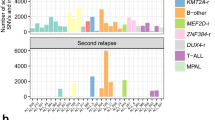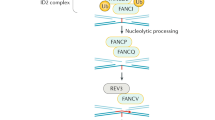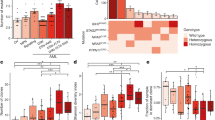Abstract
We have analysed samples from 20 patients with acute myeloid leukaemia for microsatellite alterations by comparing constitutional DNA and DNA from leukaemic samples. Twelve microsatellites were amplified by PCR and investigated for novel bands, indicative of microsatellite instability, or for loss of heterozygosity. Out of 215 paired amplifications, no additional bands were observed at any locus in any of the samples analysed and loss of heterozygosity was found only as four loci from three patients. These results suggest that microsatellite alterations are very uncommon in acute myeloid leukaemia.
This is a preview of subscription content, access via your institution
Access options
Subscribe to this journal
Receive 24 print issues and online access
$259.00 per year
only $10.79 per issue
Buy this article
- Purchase on Springer Link
- Instant access to full article PDF
Prices may be subject to local taxes which are calculated during checkout
Similar content being viewed by others
Author information
Authors and Affiliations
Rights and permissions
About this article
Cite this article
Sill, H., Goldman, J. & Cross, N. Rarity of microsatellite alterations in acute myeloid leukaemia. Br J Cancer 74, 255–257 (1996). https://doi.org/10.1038/bjc.1996.347
Issue Date:
DOI: https://doi.org/10.1038/bjc.1996.347
This article is cited by
-
Methylation of the hMLH1 promoter and its association with microsatellite instability in acute myeloid leukemia
Leukemia (2003)
-
Microsatellite instability is not a defining genetic feature of acute myeloid leukemogenesis in adults: results of a retrospective study of 132 patients and review of the literature
Leukemia (2000)



